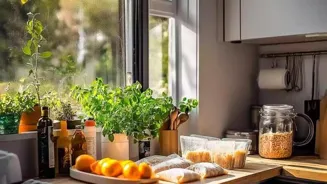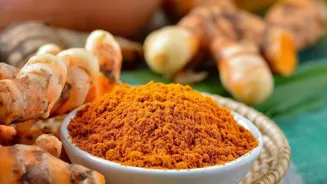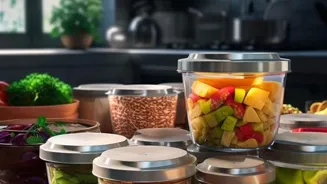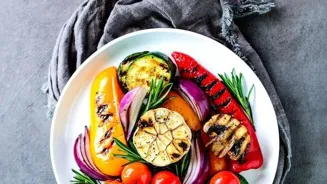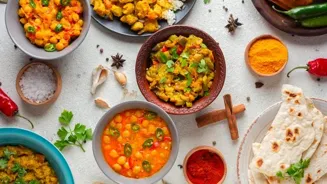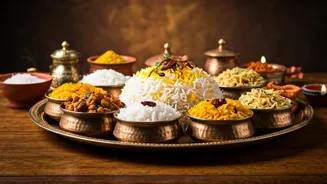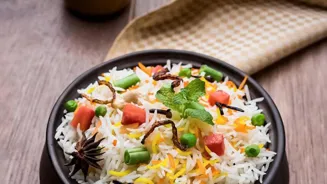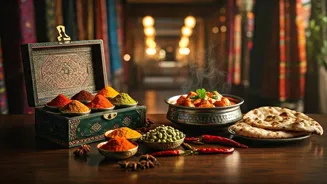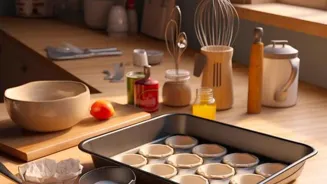Master essential cooking techniques for extraordinary meals. Elevate your culinary skills with these 7 tips
Forget fancy gadgets and celebrity chef endorsements! To truly level up your home cooking, it's
all about mastering a few fundamental techniques.
These aren’t just about following recipes; they're about understanding the 'why' behind cooking, giving you the confidence to experiment and create delicious meals with whatever you have on hand. Think of it as building a strong foundation for your culinary adventures.
We've compiled seven essential techniques that every Indian home cook should know, from basic knife skills to flavorful tempering, that will transform your cooking from routine to remarkable. Prepare to impress yourself, and your family!
Master vegetable cutting for safe and efficient cooking
First, let's talk about vegetable cutting. Proper knife skills are the cornerstone of efficient and safe cooking. Learn how to hold a knife correctly a 'pinch grip,' where you pinch the blade just above the bolster.
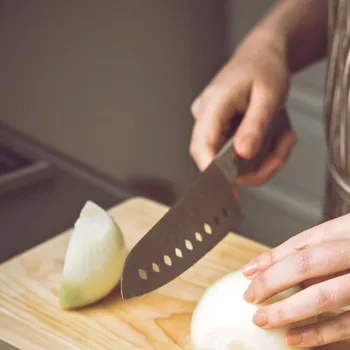
Practice different cuts: the dice for even cooking, the julienne for elegant presentation, and the chiffonade for leafy greens. A sharp knife is your best friend; invest in a good quality chef's knife and a honing steel to keep it sharp.
Remember the claw grip when holding the ingredient you are cutting; this helps to avoid accidents. Uniform cuts mean even cooking, which translates to a more delightful eating experience. Focus on achieving consistency in size and shape, not just speed, when you start out.
Master the art of roasting for flavorful veggies and more
Next is mastering the art of roasting. Roasting vegetables brings out their natural sweetness and creates a wonderfully caramelized flavor. Toss your favorite vegetables – potatoes, carrots, bell peppers, cauliflower – with a little olive oil, salt, pepper, and your preferred spices.
Spread them in a single layer on a baking sheet, and roast in a preheated oven until tender and slightly browned. Remember not to overcrowd the pan; this steams the vegetables instead of roasting them. Roasting is not just for vegetables. Many different plant based foods can be roasted as well.
Experiment with different herbs and spices to find your preferred flavor combination. A basic roasting technique can be adapted to create countless variations, making it a versatile tool in your cooking arsenal.
Technique: Saute for flavor - use hot pan, oil, aromatics, season
The third crucial technique is understanding how building flavour through sauteing. Sauteing is a quick and easy way to cook vegetables and develop layers of flavour in your dishes. Use a hot pan and a small amount of oil.
Add ingredients in order of cooking time, starting with aromatics like onions, garlic, and ginger. Saute until they’re fragrant and softened, building a foundation of flavour for your curries, dals, and stir-fries. Avoid overcrowding the pan, or the ingredients will steam instead of browning.
Keep the ingredients moving, this helps things cook evenly. Listen for the sizzle; it's an indication that your pan is at the right temperature. Don't forget to season with salt and pepper at each stage, as this will bring out specific flavours.
Mastering Indian tempering elevates dishes with flavor
Mastering tempering or tadka is a technique very specific to Indian cooking. Tempering involves heating oil or ghee, then adding spices like mustard seeds, cumin seeds, asafoetida (hing), and dried red chilies.
Once the spices sizzle and release their aroma, pour the hot oil and spices over your finished dish. Tempering adds a burst of flavor and fragrance, this elevates every simple dish from dal to khichdi. Be careful not to burn the spices, as this will turn bitter and unpleasent.
Experiment with adding different spices like curry leaves, fennel seeds, or fenugreek seeds. The art of creating an authentic tadka will provide your dishes with the traditional Indian taste that cannot be beat.
Master the art of cooking rice for perfect Indian meals
Another technique for any home cook should master lies with understanding how to cook rice properly. Perfectly cooked rice is the foundation for many Indian meals. Whether you prefer basmati, brown rice, or short-grain rice, mastering the water-to-rice ratio and cooking time is essential.
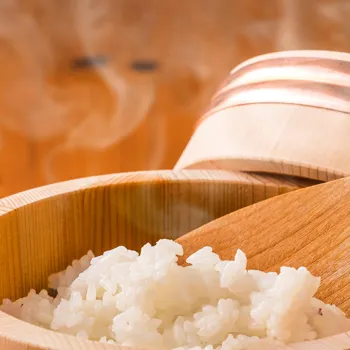
Rinse the rice before cooking to remove excess starch, which also prevents it from becoming sticky. Use a heavy-bottomed pot to avoid burning, and don't lift the lid during cooking unless the recipe advises doing so; this lets out steam.
Once cooked, fluff the rice with a fork and let it rest for a few minutes before serving. Rice cookers can be time savers, but learning to cook rice on the stovetop gives you more control over the final result.
Master the art of blending sauces for flavorful dishes
Lastly, learn the art of of blending sauces. From tomato sauce to pesto, making your own sauces allows you to control the ingredients and flavour. Start with a good base – roasted tomatoes, fresh basil, or nuts and seeds. Use a blender or food processor to combine the ingredients until smooth.

Season with salt, pepper, herbs, and spices to taste. Homemade sauces require better flavour than store-bought varieties. A variety of fresh ingredients can really make a difference to the flavour of a sauce. They are usually far healthier than what you would be able to buy at the shop.
Experiment with different flavour combinations to find your preferred sauces.
AI Generated Content. Glance/InMobi shall have no liability for the content